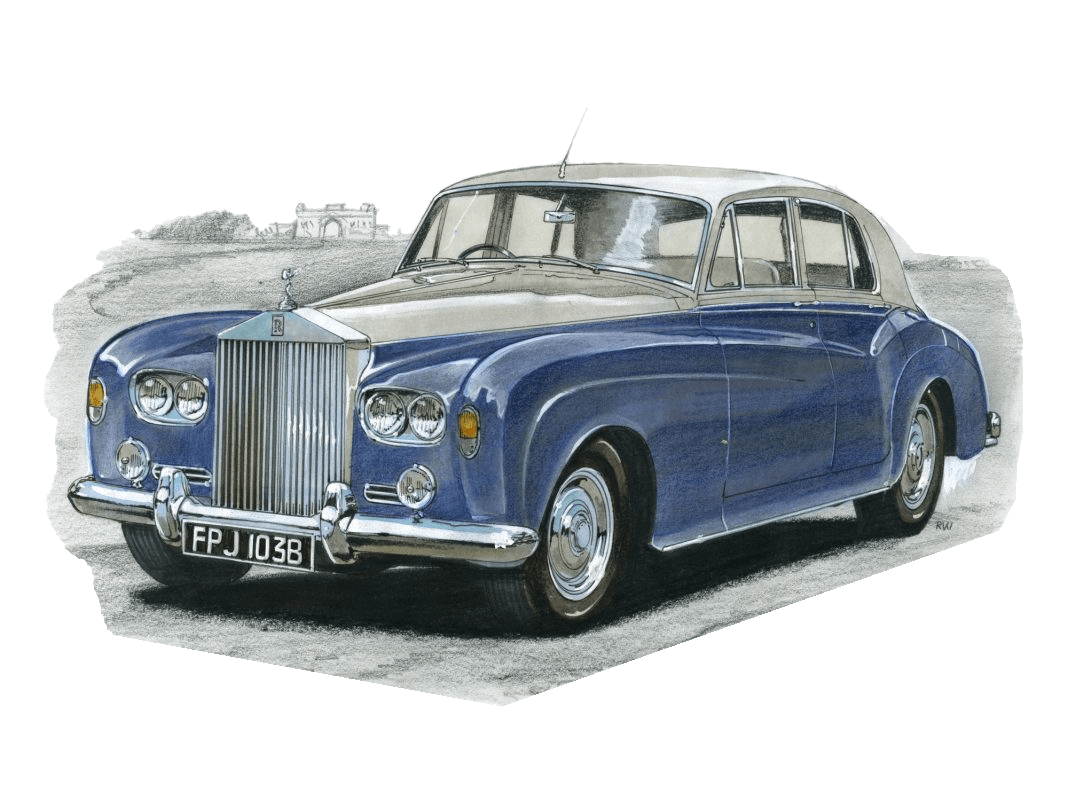
In the realm of luxury automobiles, few names have enjoyed as much recognition and reverence as the Rolls-Royce Silver Cloud. Introduced in 1955, the Silver Cloud series marked a significant step forward for Rolls-Royce, becoming one of its most successful ranges. Its reputation was solidified with the launch of the Silver Cloud III in 1962, which many enthusiasts view as the epitome of the Silver Cloud line. Nevertheless, the exploration does not end there as the Silver Cloud III offered an array of models and variations that highlighted different aspects of its design and engineering.
Several specific models and variations were introduced within the Silver Cloud III range, exhibiting the creative prowess and attention to detail that Rolls-Royce is renowned for. Most obvious was the division between the Standard Steel Saloon and the coach-built versions, furnished by the likes of H.J. Mulliner, Park Ward, and James Young.
The standard steel saloon model, as the name suggests, possessed a steel body. It held the traditional Rolls-Royce design with a focus on comfort and ride quality, embodying refinement and an understated sophistication. This model came with quad headlamps, a slightly lower radiator shell, and a distinct dropping line from the front wing to the back. It was powered by a 6.2-liter V8 engine, ensuring that the saloon had the performance to match its looks.
H.J Mulliner and Park Ward were coachbuilders involved in creating Rolls-Royce models, including the Silver Cloud III range. The most notable among the Silver Cloud III variations was the Mulliner Park Ward “Chinese Eye” Fixed Head and Drop Head Coupes. The term “Chinese Eye” stemmed from its slanted dual headlamp arrangement, which mimicked the artistic representation of an Asian eye shape. This model possessed a lower stance and sportier design, veering slightly away from the traditional Rolls-Royce theme of understated elegance. Its unique design and limited quantity make it a prized piece among classic car collectors.
James Young, another renowned coachbuilder, was responsible for an alternative design of the Silver Cloud III. The James Young Phantom V Touring Limousine was built on the Silver Cloud III chassis but featured an elongated wheelbase, providing additional rear passenger legroom suited to a limousine. These models were limited, adding to their sought-after nature.
Models fitted out by renowned coach builders Radford and Hooper are rare but treasured examples of the Silver Cloud III. Radford often turned saloon cars into estates, while Hooper produced limousines with a high level of bespoke tailoring.
The Silver Cloud III was also available as a convertible model, launched in 1962, it catered to those seeking an open-air luxury driving experience. Its convertible design boasted a perfect blend of luxury, style, and classiness.
In conclusion, the Silver Cloud III range offered a series of specific models and variations that not only depicted the genius of Rolls-Royce’s craftsmanship but also the ingenuity of the coachbuilders such as H.J. Mulliner, Park Ward, and James Young. Each variation within the series offered unique aesthetics and attributes, demonstrating Rolls-Royce’s commitment to catering to the diverse tastes and requirements of its esteemed clientele. Whether you prefer the traditional elegance of the standard saloon, the sporty contours of the “Chinese Eye,” or the executive luxury of the Phantom V Touring Limousine, the Silver Cloud III range was a true testament to the art of car manufacturing.